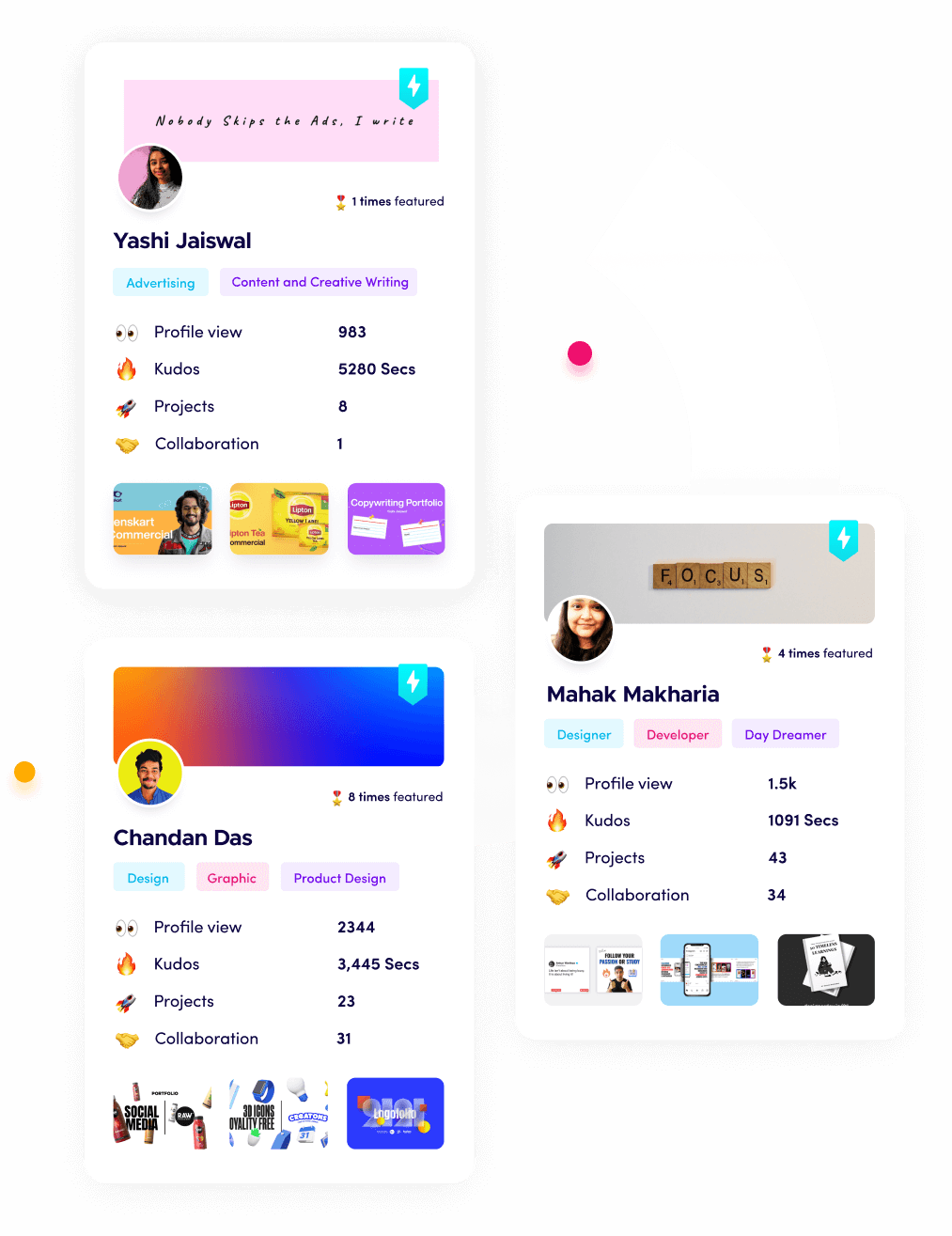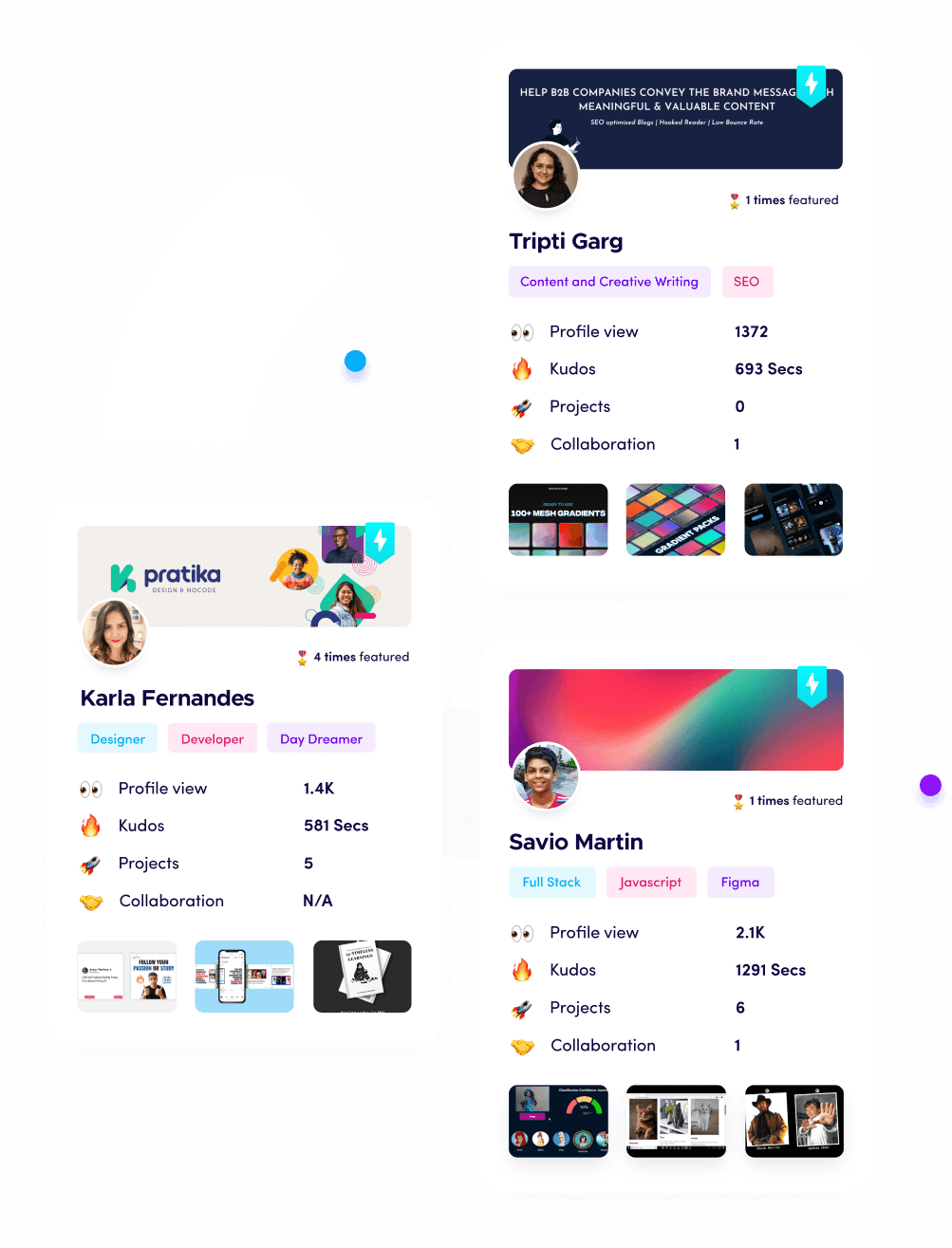20 Employee Engagement Statistics You Need to Know [2025]: Unlock the Power of a Motivated Workforce

Riten Debnath
12 Jun, 2025
![20 Employee Engagement Statistics You Need to Know [2025]: Unlock the Power of a Motivated Workforce](https://fueler.io/storage/canvas/images/NEEM0UKzYK3dskxIF5kmiBzJIHCOLdo9vwIFd78R.jpg)
Want to know the secret to a thriving workplace that skyrockets productivity and keeps your team buzzing with energy? It’s employee engagement—and the numbers don’t lie! Engaged employees can boost profits by 23%, while disengaged ones cost companies trillions globally. As we step into 2025, I’ve gathered 20 jaw-dropping employee engagement statistics that every HR team, manager, and business owner needs to know. These stats will spark ideas, inspire action, and help you build a workplace where employees love to show up. Ready to transform your team? Let’s dive into the numbers that will change the game!
I’m Riten, founder of Fueler, a platform that helps freelancers and professionals get hired through their work samples. In this article, I’ve walked you through the most critical employee engagement statistics for 2025. But beyond understanding these numbers, the key is applying them smartly. A strong employee engagement strategy isn’t just about data—it’s proof of your commitment to your team’s growth, morale, and success. Just like a well-crafted portfolio, a solid engagement plan builds trust and sets the stage for long-term success.
What Is Employee Engagement?
Employee engagement is the fire in your team’s belly—the passion, commitment, and enthusiasm they bring to their work and your company. Engaged employees don’t just clock in and out; they’re invested, motivated, and ready to go the extra mile. Building this level of commitment takes more than motivation; it requires creating a workplace where employees feel truly valued and treated fairly. Transparent compensation, supported by clear access to a real pay stub, strengthens trust and deepens employees’ connection to the organization. Unlike job satisfaction, which is about feeling content, engagement is about feeling connected to the company’s mission and actively contributing to its goals. In 2025, engagement is the heartbeat of a successful workplace, driving productivity, loyalty, and innovation.
Why does this matter? Engaged employees create happier customers, lower turnover, and stronger profits. These 20 statistics will show you how to tap into that power and avoid the costly pitfalls of disengagement.
Why Employee Engagement Matters in 2025
Employee engagement isn’t just a feel-good concept—it’s a business game-changer. Here’s why it’s a top priority for 2025:
- Skyrockets Productivity: Engaged employees work harder, smarter, and faster, delivering top-notch results.
- Cuts Turnover Costs: When people feel valued, they stick around, saving you the hassle and expense of hiring.
- Boosts Customer Loyalty: Happy employees create happy customers, building a loyal client base.
- Sparks Innovation: Engaged teams are bursting with creative ideas, pushing your business to new heights.
With trends like hybrid work, AI-driven feedback, and a focus on mental health shaping 2025, these statistics will help you stay ahead and build a workplace that thrives.
20 Employee Engagement Statistics for 2025
Below, I’ve compiled 20 powerful employee engagement statistics for 2025, sourced from trusted names like Gallup, McKinsey, and Quantum Workplace. Each stat comes with a detailed explanation, real-world insights, and actionable tips to keep your team fired up. These aren’t just numbers—they’re your roadmap to a motivated, high-performing workforce. Let’s get started!
1. Only 23% of Employees Worldwide Are Engaged
Gallup’s 2023 State of the Global Workplace Report found that just 23% of employees globally are actively engaged—a record high, but still low. Meanwhile, 59% are “quiet quitting” (doing the minimum), and 18% are actively disengaged, dragging teams down. Engagement is highest in South Asia (33%) and lowest in Europe (13%).
- Why It’s a Big Deal: When only a quarter of your team is fully invested, you’re missing out on massive productivity gains. Quiet quitting and disengagement sap morale and slow growth.
- What to Do: Run pulse surveys with tools like ContactMonkey to check engagement levels monthly. Recognize achievements publicly to boost morale. Create clear career paths to give employees a reason to stay invested.
- Real-World Example: Companies like Google use frequent feedback to keep engagement high, ensuring employees feel heard.
- Quick Tip: Start small—send a weekly “shout-out” email to celebrate team wins.
2. Engaged Employees Boost Profits by 23%
A 2021 Harvard Business Review study showed that companies with high engagement see 23% higher profitability. Engaged teams work more efficiently, leading to better financial outcomes.
- Why It’s a Big Deal: Engagement isn’t just about happy employees—it’s a direct driver of your bottom line. More profits mean more room to grow and invest.
- What to Do: Align individual goals with company objectives using OKR tools like PossibleWorks. Celebrate milestones with rewards like gift cards or extra time off.
- Real-World Example: Salesforce links employee goals to company success, driving both engagement and profits.
- Quick Tip: Set clear, measurable goals for each team member to keep them motivated.
3. 59% of Employees Are Quiet Quitting
Gallup’s 2023 report revealed that 59% of employees are “quiet quitting,” meaning they do the bare minimum. This trend stems from feeling unrecognized or disconnected from company goals.
- Why It’s a Big Deal: Quiet quitting kills productivity and innovation, leaving your team stuck in neutral.
- What to Do: Build a recognition culture with platforms like Bonusly for instant peer-to-peer praise. Hold regular one-on-ones to understand employee needs.
- Real-World Example: Zappos uses frequent recognition to keep employees engaged, reducing quiet quitting.
- Quick Tip: Ask employees what motivates them—sometimes it’s as simple as a “thank you.”
4. Disengaged Employees Cost $7.8 Trillion Globally
Disengaged employees cost the global economy $7.8 trillion annually in lost productivity, according to Gallup’s 2023 report. That’s a massive hit to businesses worldwide.
- Why It’s a Big Deal: Disengagement isn’t just a team issue—it’s a financial disaster that can cripple your company’s growth.
- What to Do: Use engagement analytics tools like Peoplebox.ai to spot disengaged teams early. Offer training and growth opportunities to re-engage employees.
- Real-World Example: Microsoft uses AI-driven insights to track engagement and address issues fast.
- Quick Tip: Check in with disengaged employees to uncover root causes like workload or lack of purpose.
Strategic Fueler Promotion: Speaking of showcasing potential, engagement is like a portfolio—it shows the world what your team is capable of. At Fueler, our platform helps professionals build portfolios that highlight their skills through real work samples, making it easier for companies to hire top talent. Just like a great engagement strategy, a strong portfolio builds trust and drives success. Check out Fueler to see how we can help your team shine!
5. Companies with High Engagement Have 43% Lower Turnover
McKinsey’s 2022 research found that high-engagement workplaces see 43% lower turnover rates. Engaged employees are more likely to stay, saving hiring costs.
- Why It’s a Big Deal: Replacing employees is expensive—losing talent can cost up to 2x their salary. Engagement keeps your best people on board.
- What to Do: Offer career development programs and mentorship. Use tools like Lattice to track retention metrics and plan growth paths.
- Real-World Example: Adobe’s mentorship programs keep employees engaged and loyal.
- Quick Tip: Create a “stay interview” process to ask employees why they stay and what they need.
6. 70% of Employees Want More Recognition
A 2023 Achievers survey showed that 70% of employees crave more recognition for their work. Lack of appreciation is a top reason for disengagement.
- Why It’s a Big Deal: Feeling unappreciated pushes employees to check out mentally, hurting team spirit.
- What to Do: Implement a recognition program with tools like Kudos. Celebrate both big and small wins publicly.
- Real-World Example: Hilton’s recognition program boosts employee morale and guest satisfaction.
- Quick Tip: Send personalized thank-you notes to show genuine appreciation.
7. Engaged Employees Are 87% Less Likely to Leave
Gallup’s 2023 data shows engaged employees are 87% less likely to leave their jobs. They feel connected to their company’s mission and culture.
- Why It’s a Big Deal: Retaining talent saves time, money, and knowledge loss, keeping your team strong.
- What to Do: Foster a sense of purpose by sharing your company’s vision. Use tools like Culture Amp to measure cultural alignment.
- Real-World Example: Patagonia’s mission-driven culture keeps employees loyal and engaged.
- Quick Tip: Share your company’s “why” in team meetings to build connection.
8. 82% of Employees Want Growth Opportunities
A 2023 LinkedIn study found that 82% of employees prioritize career development opportunities. Without growth, they feel stuck and disengaged.
- Why It’s a Big Deal: Employees want to learn and grow—ignoring this leads to boredom and turnover.
- What to Do: Offer training programs, certifications, or mentorship. Use platforms like Degreed to track learning progress.
- Real-World Example: Amazon’s upskilling programs keep employees engaged and growing.
- Quick Tip: Create a learning budget for each employee to invest in their skills.
9. Remote Workers Are 20% Less Engaged
A 2023 Slack survey found that remote employees are 20% less engaged than in-office workers due to isolation and communication challenges.
- Why It’s a Big Deal: With remote work still common in 2025, low engagement can hurt virtual team performance.
- What to Do: Use tools like Slack or Microsoft Teams for regular check-ins. Host virtual team-building events to build connection.
- Real-World Example: GitLab’s all-remote culture uses frequent check-ins to keep engagement high.
- Quick Tip: Schedule weekly virtual coffee chats to foster team bonding.
10. 65% of Employees Feel Overworked
A 2023 Workhuman survey revealed that 65% of employees feel overworked, leading to burnout and disengagement.
- Why It’s a Big Deal: Burnout kills motivation and productivity, pushing top talent out the door.
- What to Do: Monitor workloads with tools like Asana. Offer flexible schedules or wellness programs to reduce stress.
- Real-World Example: Buffer’s 4-day workweek reduces burnout and boosts engagement.
- Quick Tip: Encourage employees to take regular breaks to recharge.
11. Engaged Teams Have 66% Better Customer Ratings
A 2022 Gallup study showed that engaged teams deliver 66% higher customer satisfaction scores. Happy employees create happy customers.
- Why It’s a Big Deal: Customer loyalty drives revenue, and engaged employees are key to delivering great service.
- What to Do: Train employees in customer service skills. Use tools like Zendesk to track customer feedback and tie it to engagement.
- Real-World Example: Ritz-Carlton’s engaged staff create memorable guest experiences.
- Quick Tip: Share positive customer feedback with your team to boost morale.
12. 74% of Employees Want Flexible Work Options
A 2023 FlexJobs survey found that 74% of employees want flexible work arrangements, like hybrid or remote options, to stay engaged.
- Why It’s a Big Deal: Flexibility is a top driver of engagement in 2025, especially for younger workers.
- What to Do: Offer hybrid work policies and tools like Zoom for seamless collaboration. Survey employees to understand their needs.
- Real-World Example: Dropbox’s flexible work model keeps employees engaged and productive.
- Quick Tip: Let employees choose their work hours within a set framework.
13. 68% of Employees Say Feedback Improves Performance
A 2023 Zenger Folkman study found that 68% of employees say regular feedback helps them perform better and stay engaged.
- Why It’s a Big Deal: Feedback shows employees you care about their growth, keeping them motivated.
- What to Do: Schedule monthly one-on-ones and use tools like 15Five for continuous feedback. Train managers to give constructive input.
- Real-World Example: Adobe’s check-in model boosts engagement through frequent feedback.
- Quick Tip: Use the SBI (Situation-Behavior-Impact) model for clear, actionable feedback.
14. Companies with Engaged Employees See 18% Higher Sales
A 2022 Aberdeen Group study showed that engaged employees drive 18% higher sales revenue through better performance and customer service.
- Why It’s a Big Deal: Engagement directly boosts your revenue, making it a critical business metric.
- What to Do: Tie employee goals to sales targets using tools like Salesforce. Reward top performers with bonuses or recognition.
- Real-World Example: HubSpot’s engaged sales teams drive consistent revenue growth.
- Quick Tip: Celebrate sales wins in team meetings to keep motivation high.
15. 80% of Employees Want a Sense of Purpose
A 2023 McKinsey survey found that 80% of employees want their work to feel meaningful, driving higher engagement.
- Why It’s a Big Deal: Purpose connects employees to your mission, making them more committed and productive.
- What to Do: Share your company’s vision in onboarding and team meetings. Use tools like Workvivo to highlight purpose-driven projects.
- Real-World Example: TOMS’ purpose-driven culture keeps employees engaged and loyal.
- Quick Tip: Share customer success stories to show employees their impact.
16. Engaged Employees Take 41% Fewer Sick Days
A 2022 Gallup study found that engaged employees take 41% fewer sick days, as they’re healthier and less stressed.
- Why It’s a Big Deal: Fewer absences mean more consistent productivity and lower costs.
- What to Do: Offer wellness programs like gym memberships or mental health support. Use tools like Wellable to track participation.
- Real-World Example: Johnson & Johnson’s wellness programs reduce absenteeism and boost engagement.
- Quick Tip: Provide mental health days to support employee well-being.
17. 72% of Gen Z Employees Prioritize Work-Life Balance
A 2023 Deloitte survey showed that 72% of Gen Z employees value work-life balance as a key engagement driver.
- Why It’s a Big Deal: Younger workers will leave if balance isn’t prioritized, impacting retention.
- What to Do: Offer flexible hours and remote work options. Use tools like Toggl to track time and prevent overwork.
- Real-World Example: Shopify’s flexible policies attract and retain Gen Z talent.
- Quick Tip: Allow employees to set boundaries, like no emails after 6 PM.
18. 67% of Employees Want More Team Collaboration
A 2023 Atlassian survey found that 67% of employees want better collaboration tools and opportunities to stay engaged.
- Why It’s a Big Deal: Collaboration builds team spirit and drives innovation, key to engagement.
- What to Do: Use tools like Miro or Trello for team projects. Host regular team-building activities, virtual or in-person.
- Real-World Example: Atlassian’s collaboration tools keep their teams engaged and productive.
- Quick Tip: Plan a monthly team-building event, like a virtual trivia night.
19. Engaged Employees Are 3x More Likely to Innovate
A 2022 Bain & Company study found that engaged employees are three times more likely to share innovative ideas, driving business growth.
- Why It’s a Big Deal: Innovation keeps your company competitive, and engaged employees are your best idea generators.
- What to Do: Create an idea-sharing platform like IdeaScale. Reward innovative ideas with recognition or bonuses.
- Real-World Example: 3M’s innovation culture thrives on engaged employees sharing ideas.
- Quick Tip: Host quarterly “idea jams” to spark creativity.
20. 76% of Employees Want Mental Health Support
A 2023 Mind Share Partners survey found that 76% of employees want mental health resources to stay engaged and productive.
- Why It’s a Big Deal: Mental health support reduces burnout and keeps employees motivated.
- What to Do: Offer EAPs (Employee Assistance Programs) and mental health days. Use tools like Calm for Business to provide resources.
- Real-World Example: Starbucks’ mental health benefits boost employee engagement and loyalty.
- Quick Tip: Normalize mental health conversations in team meetings.
Final Thoughts
Employee engagement in 2025 isn’t just about making people happy—it’s about unlocking your team’s full potential to drive profits, innovation, and loyalty. These 20 statistics show that engaged employees are the key to a thriving workplace, from boosting sales to reducing turnover. By acting on these insights—offering recognition, flexibility, and growth opportunities—you can build a team that’s motivated, productive, and ready to take your business to new heights. Start small, use the right tools, and watch your workplace transform into a powerhouse of success!
FAQs
1. What are the top employee engagement statistics for 2025?
Key stats include 23% global engagement, 59% quiet quitting, and 23% higher profits for engaged teams. These numbers highlight the need for recognition, feedback, and purpose to boost engagement.
2. How can I improve employee engagement in 2025?
Use regular feedback, recognition programs, and flexible work options. Tools like Lattice, Bonusly, and Peoplebox.ai help track engagement and create actionable plans.
3. Why is employee engagement important for businesses?
Engagement drives productivity, reduces turnover, and boosts profits by up to 23%. It also improves customer satisfaction and fosters innovation, making it critical for success.
4. What tools can HR teams use for employee engagement in 2025?
Popular tools include ContactMonkey for pulse surveys, Culture Amp for feedback, and Workvivo for communication. These platforms help measure and improve engagement.
5. How does employee engagement affect retention?
Engaged employees are 87% less likely to leave, per Gallup. Offering growth opportunities, recognition, and work-life balance keeps talent loyal and reduces hiring costs.
What is Fueler Portfolio?
Fueler is a career portfolio platform that helps companies find the best talents for their organization based on their proof of work.
You can create your portfolio on Fueler, thousands of freelancers around the world use Fueler to create their professional-looking portfolios and become financially independent. Discover inspiration for your portfolio
Sign up for free on Fueler or get in touch to learn more.


